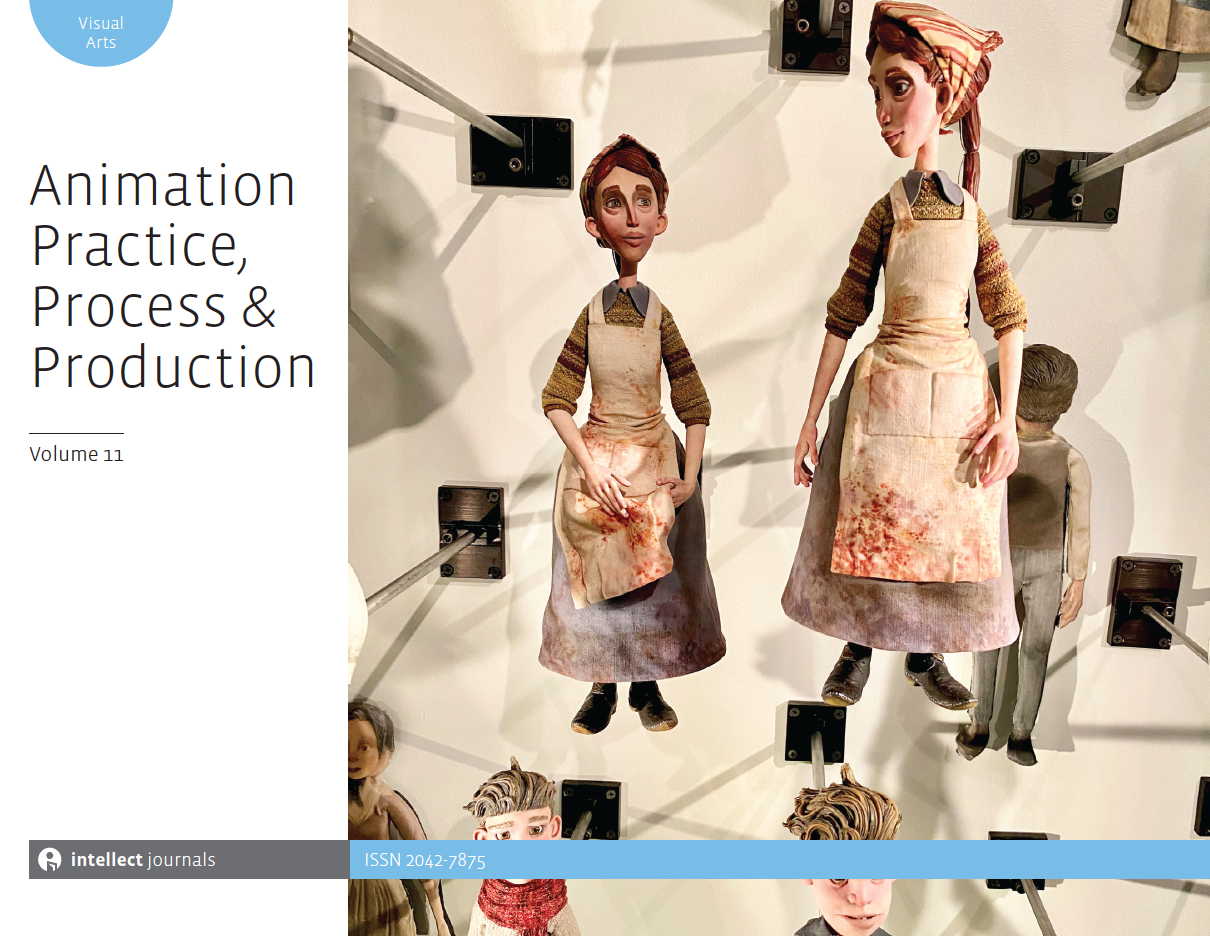-
f Practice, theory and the animation studies continuum
- Source: Animation Practice, Process & Production, Volume 10, Issue 1, Aug 2021, p. 3 - 9
-
- 26 Dec 2022
- Previous Article
- Table of Contents
- Next Article
Abstract
This editorial explores how advancements in the sphere of practice-based research, and university programmes supporting this realm of inquiry, have contributed to an increased confidence in the ways in which animation practitioners discuss and reflect upon their work, drawing upon a range of theories and methodologies. References are made to Paul Ward’s essay ‘Some thoughts on practice-theory relationships in animation studies’ (2006), and there is a consideration of his preference for a ‘weak classification’ approach – one that acknowledges animation’s rich eclecticism – rather than maintain rigid boundaries. Ward’s ideas are informed by sociologist Basil Bernstein’s theories, and he also draws upon Mike Wayne’s study of media production practices, to advocate for the ‘critical practitioner’, as compared to the more circumscribed ‘reflexive’ – with a tendency to focus upon the minutiae of technology – and ‘theoretical’ practitioner, who dwells upon the importance of the text. Instead, the ‘critical practitioner’ possesses the skills to reflect upon what they do and why, and contextualise the work from a social, historical and political perspective.
Further developments in animation studies over the last fifteen years have included an increase in texts that thoughtfully yoke both practice and theory, including essays by Claudia Hart, Paul Wells and Johnny Hardstaff’s book Re-Imagining Animation: The Changing Face of Moving Image (2008) and Aylish Wood’s essay ‘Behind the scenes: A study of Autodesk Maya’ (2014). The editorial provides details about the essays contained within this particular edition, and the ways in which they evidence the thinking of the ‘critical practitioner’, by drawing upon a diverse range of sources, and integrating a perceptive discussion of both practice and theory.



